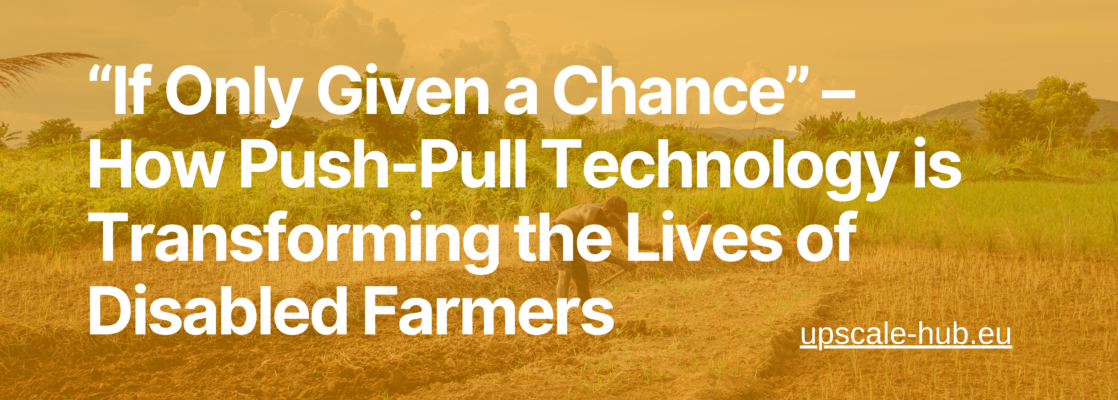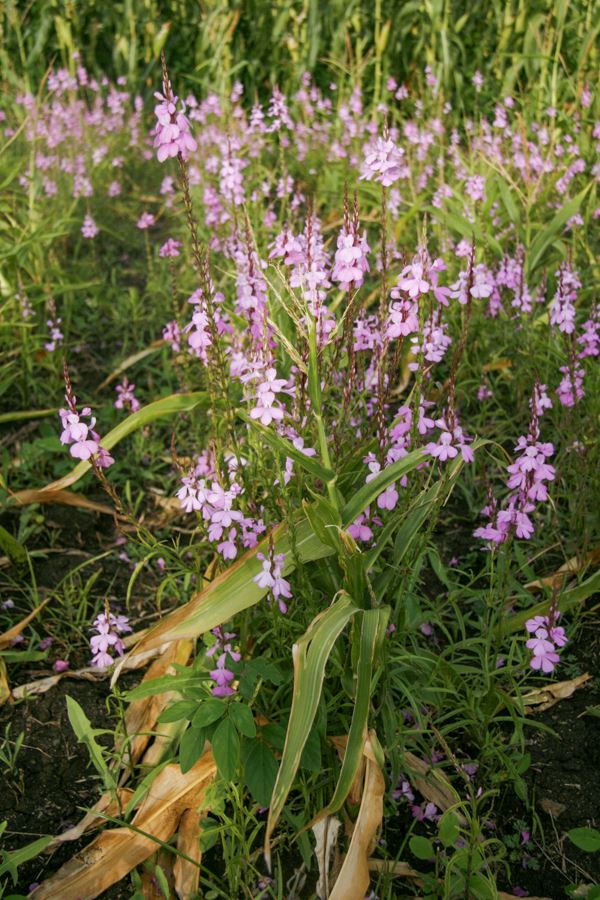In rural Sub-Saharan Africa, farming is more than a job—it’s a way of life and a means of survival. But for many, especially those living with disabilities, traditional farming methods are physically demanding, inaccessible, and often socially exclusive. That’s where push-pull technology steps in, offering not just an agricultural solution—but a path to independence, dignity, and a renewed sense of purpose.
This blog is based on insights and stories shared in the publication “Push–pull and physically disabled farmers: an appropriate agricultural technology for improving livelihoods” by the International Centre of Insect Physiology and Ecology (icipe), a valued partner in the UPSCALE project.
What is Push-Pull Technology?
Push-pull is an environmentally friendly farming method developed by scientists at icipe and Rothamsted Research. It helps smallholder farmers fight pests like stemborers and fall armyworm, and the parasitic weed striga, which can destroy entire harvests. The method involves planting repellent crops like Desmodium between rows of maize or sorghum (“push”) and attractive crops like Brachiaria grass around the field (“pull”).
Besides controlling pests, the method improves soil fertility, provides year-round fodder for animals, and significantly increases yields—even on small plots of land.
Why This Matters for Disabled Farmers
For people living with physical disabilities, the burden of traditional farming is often too heavy. From weeding to pest control, the tasks require intense labour—something not always possible for individuals with mobility challenges. But push-pull changes that. After the initial setup, it requires much less labour in the following seasons. It minimizes weeding, improves productivity on small plots, and produces fodder for stall-fed animals like goats, rabbits, and poultry—ideal for people with limited mobility. And most importantly, it restores dignity.
Real Stories, Real Impact
Take Ezra Amoche, a farmer from Kenya who lives with a disability. Before adopting push-pull, he could barely produce enough maize to feed his family. Now, his harvest has increased fivefold.
Or Berryl Atieno, who went from struggling with unemployment to becoming a push-pull role model. Her success in maize production even led her to pursue a diploma in agriculture.
Then there’s the Maseno Depot Disabled Group (MDDG), whose members began farming together using push-pull methods. They now grow food not only for themselves but as a demonstration to others. Their motto? “Disability is not inability.”
More Than Farming
Push-pull has become more than just a method—it’s a movement. Groups like the Emanyinya People with Disability Group are using it to fight hunger and poverty. Members share knowledge, build grain stores for collective harvests, and create inclusive, self-sustaining communities.
As Rumona Mayoka, the group’s founder, said:
“Push–pull has taken us to a level where we no longer consider ourselves disabled, because we are farmer–teachers.”
What’s Next?
The success stories show that when disabled farmers are given access to knowledge, land, and support, they can thrive. The spread of push-pull to more disabled communities depends on awareness, education, and the encouragement to believe: that farming is possible—if only given a chance.
“Do not judge us when you see us on a wheelchair or with crutches. These are just a support. We can educate others on farming, rabbit rearing, and more—through push-pull technology.”
— Berryl Atieno, Vihiga County, Kenya


